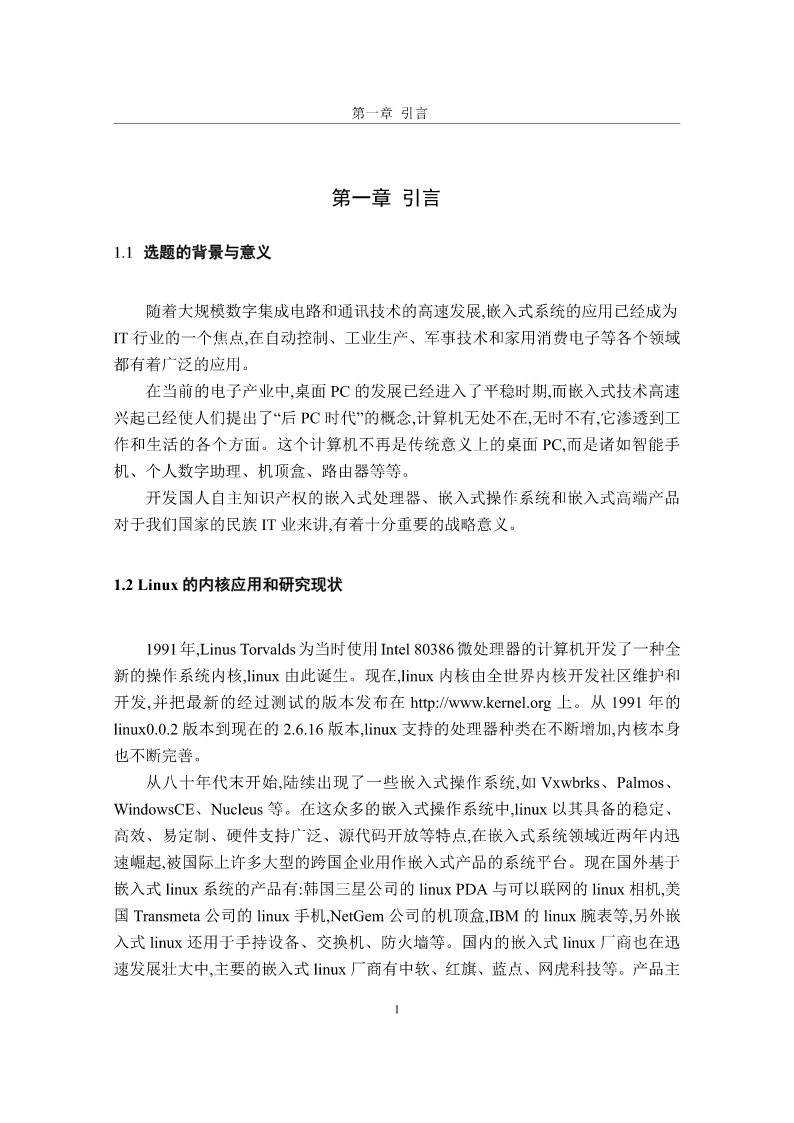
Linux下的USB驱动程序开发.pdf

as****16










亲,该文档总共57页,到这已经超出免费预览范围,如果喜欢就直接下载吧~
相关资料

Linux下的USB驱动程序开发.pdf
摘要摘要随着信息化技术的发展和数字化产品的普及,以计算机技术、集成电路技术和软件技术为核心的嵌入式系统得到了广泛的应用。然而,随着嵌入式设备的广泛应用和深入发展,功能日益强大的嵌入式系统所要求的外接设备越来越丰富,于是就出现了外接设备的识别和驱动问题。由于嵌入式备的种类和特点决定了嵌入式产品在开发时必须设计与自己设备相配套的驱动程序,所以怎样在特定的设备中开发自己的驱动程序成为本文研究的重心。Linux操作系统以其开放源代码、易于开发、功能强大稳定、可裁剪和成本低等特点,迅速成为当今嵌入式系统的主流开发平

Linux系统下USB驱动程序的设计与开发.docx
Linux系统下USB驱动程序的设计与开发Linux系统下USB驱动程序的设计与开发论文导读::操作系统是一个源码公开、结构清晰、功能强大。总线具有低成本、使用简单、支持即插即用、易于扩展等特点。本文首先介绍linux驱动程序的架构。关键词:Linux,USB,驱动程序0引言Linux操作系统是一个源码公开、结构清晰、功能强大,且已成为一个稳定可靠功能完善的系统。其开发群体的有效组织和高效工作,使得linux系统稳定发展并得到良好维护。USB总线是Intel、DEC、MicroSoft、IBM等公司联合提

Linux系统下USB驱动程序的设计与开发.docx
Linux系统下USB驱动程序的设计与开发Linux系统下USB驱动程序的设计与开发论文导读::操作系统是一个源码公开、结构清晰、功能强大。总线具有低成本、使用简单、支持即插即用、易于扩展等特点。本文首先介绍linux驱动程序的架构。关键词:Linux,USB,驱动程序0引言Linux操作系统是一个源码公开、结构清晰、功能强大,且已成为一个稳定可靠功能完善的系统。其开发群体的有效组织和高效工作,使得linux系统稳定发展并得到良好维护。USB总线是Intel、DEC、MicroSoft、IBM等公司联合提

Linux系统下USB驱动程序的设计与开发.docx
Linux系统下USB驱动程序的设计与开发Linux系统下USB驱动程序的设计与开发论文导读::操作系统是一个源码公开、结构清晰、功能强大。总线具有低成本、使用简单、支持即插即用、易于扩展等特点。本文首先介绍linux驱动程序的架构。关键词:Linux,USB,驱动程序0引言Linux操作系统是一个源码公开、结构清晰、功能强大,且已成为一个稳定可靠功能完善的系统。其开发群体的有效组织和高效工作,使得linux系统稳定发展并得到良好维护。USB总线是Intel、DEC、MicroSoft、IBM等公司联合提

Linux系统下USB驱动程序的设计与开发.docx
Linux系统下USB驱动程序的设计与开发Linux系统下USB驱动程序的设计与开发论文导读::操作系统是一个源码公开、结构清晰、功能强大。总线具有低成本、使用简单、支持即插即用、易于扩展等特点。本文首先介绍linux驱动程序的架构。关键词:Linux,USB,驱动程序0引言Linux操作系统是一个源码公开、结构清晰、功能强大,且已成为一个稳定可靠功能完善的系统。其开发群体的有效组织和高效工作,使得linux系统稳定发展并得到良好维护。USB总线是Intel、DEC、MicroSoft、IBM等公司联合提
